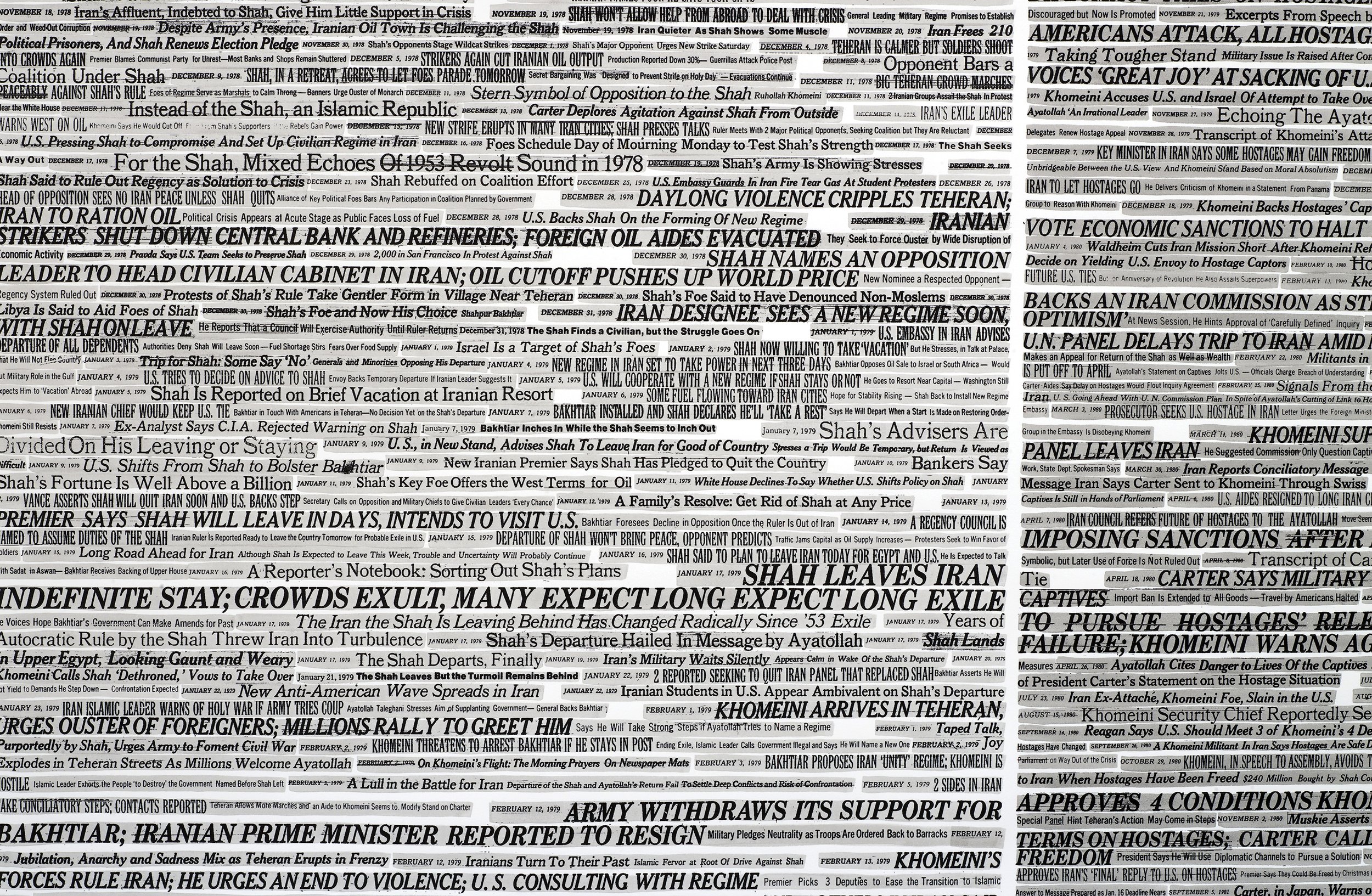New York Times Headlines (Mossadegh → 9/11)
2010
Watercolor on paper
L.36” x W. 116”
This work examines the connections between several significant events in the history of U.S. foreign relations beginning with the nationalization of oil in Iran in 1951 and ending with the September 11th attacks in 2001.
In 1951, the democratically elected leader of Iran, Mohammed Mossadegh, nationalizes the nation’s oil industry. This causes tension between Iran and the United States and Britain. In August of 1953 the C.I.A. instigates and successfully completes a coup to overthrow Mossadegh and install Shah Reza Pahlavi as the leader of Iran. The Shah’s repressive, autocratic regime creates the conditions for the emergence of the radical, fundamentalist, and anti-American Ayatollah Khomeini. Khomeini’s revolution forces the Shah into exile in 1979 and installs the Ayatollah as the new Iranian leader. In 1979, the Iran hostage crisis begins, severing ties between Iran and the United States. In 1980, Iraq invades a weakened Iran and starts the Iran-Iraq War. Because Iran is now the enemy of the United States, the U.S. supports Iraq during the war by providing intelligence, economic aid, military training, and weaponry. Iraq defeats Iran in 1988 and emerges as a stronger nation largely as a result of U.S. aid during the war. In 1990, an emboldened Iraq invades Kuwait to initiate the first Gulf War. The United States becomes involved in the war, using Saudi Arabia as its primary military operating base, and ultimately defeats the Iraqis. After the war, the U.S. has 40,000 troops permanently stationed in Saudi Arabia. The presence of American troops on Saudi soil is often cited by Osama Bin Laden as the primary justification for attacks against the U.S., including 9/11.


